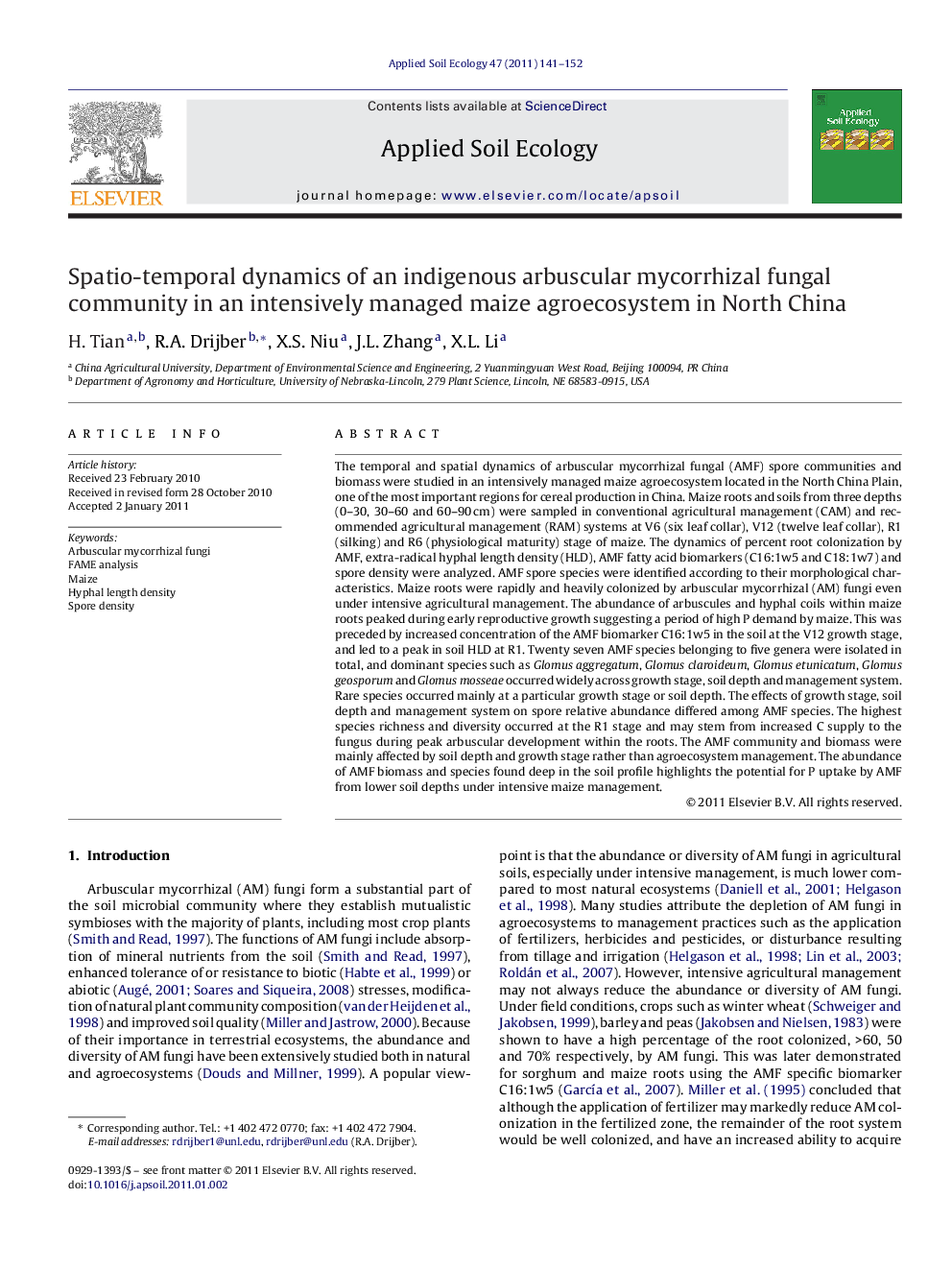| کد مقاله | کد نشریه | سال انتشار | مقاله انگلیسی | نسخه تمام متن |
|---|---|---|---|---|
| 4382744 | 1304228 | 2011 | 12 صفحه PDF | دانلود رایگان |

The temporal and spatial dynamics of arbuscular mycorrhizal fungal (AMF) spore communities and biomass were studied in an intensively managed maize agroecosystem located in the North China Plain, one of the most important regions for cereal production in China. Maize roots and soils from three depths (0–30, 30–60 and 60–90 cm) were sampled in conventional agricultural management (CAM) and recommended agricultural management (RAM) systems at V6 (six leaf collar), V12 (twelve leaf collar), R1 (silking) and R6 (physiological maturity) stage of maize. The dynamics of percent root colonization by AMF, extra-radical hyphal length density (HLD), AMF fatty acid biomarkers (C16:1w5 and C18:1w7) and spore density were analyzed. AMF spore species were identified according to their morphological characteristics. Maize roots were rapidly and heavily colonized by arbuscular mycorrhizal (AM) fungi even under intensive agricultural management. The abundance of arbuscules and hyphal coils within maize roots peaked during early reproductive growth suggesting a period of high P demand by maize. This was preceded by increased concentration of the AMF biomarker C16:1w5 in the soil at the V12 growth stage, and led to a peak in soil HLD at R1. Twenty seven AMF species belonging to five genera were isolated in total, and dominant species such as Glomus aggregatum, Glomus claroideum, Glomus etunicatum, Glomus geosporum and Glomus mosseae occurred widely across growth stage, soil depth and management system. Rare species occurred mainly at a particular growth stage or soil depth. The effects of growth stage, soil depth and management system on spore relative abundance differed among AMF species. The highest species richness and diversity occurred at the R1 stage and may stem from increased C supply to the fungus during peak arbuscular development within the roots. The AMF community and biomass were mainly affected by soil depth and growth stage rather than agroecosystem management. The abundance of AMF biomass and species found deep in the soil profile highlights the potential for P uptake by AMF from lower soil depths under intensive maize management.
Research highlights▶ The abundance of AMF in roots/soil peaked during high P demand by maize. ▶ High AMF species richness/diversity found in field soil at the R1 stage of maize. ▶ AMF diversity and biomass were mainly influenced by soil depth and maize growth stage. ▶ Results highlight the potential for P uptake by AMF from lower soil depths.
Journal: Applied Soil Ecology - Volume 47, Issue 3, March 2011, Pages 141–152